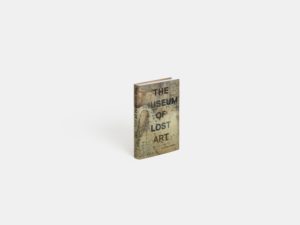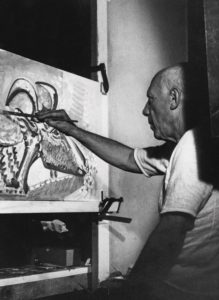Noah Charney aims to convince us that ‘it is important to study what has been lost, and why, to understand how art can best be preserved in the future, to appreciate what has survived and just how delicate is that miraculous fraction of mankind’s creative history.’ He is passionate and eloquent and persuasive.
Heather Benning, The Dollhouse: Dusk #3, 2007, printed 2011, Kodak Endura digital C-print, 50.8 × 76.2 cm (20 × 30 in) Picture credit: Courtesy of Heather Benning (page 204, upper)
How can art be lost? Quite easily, it seems. In sixteenth century Italy artists sought to have sprezzatura, a ‘studied carelessness’ which meant making the work look easy – and therefore it was the practice to destroy preparatory drawings. We know Michelangelo did this – and can only imagine what we have lost. Most losses, though, have their roots in natural disasters, human greed or prejudice, or were simply collateral damage. This is, in many ways, a melancholy book.
Still from the film Le mystère Picasso, 1956, dir. Henri-Georges Clouzot. Picture credit: © Succession Picasso/DACS, London 2018 (page 200)
After a comprehensive introduction the sections of The Museum of Lost Art are organised into types of loss: Theft, War, Accident and so on until the intriguing Lost, or Never Was. The conclusion which follows allows us some hope of future recoveries, and instances of earlier unexpected finds – and less unexpected negotiated ransoms. Charney also considers the value of 3D printing (the reimagining of Palmyra’s Arch of Triumph which was rebuilt in Trafalgar Square) and ends with a sad story of the ultimate piece of performance art.
Each section is enclosed within the story of a work of art which was once lost but eventually found or recovered. Within each section is history, drama and exploration which gives the research an often gripping pace without losing contact with its evident scholarly roots. I found it fascinating. The story of art thief Adam Worth (apparently the model for Conan Doyle’s Moriarty, but far more engaging) is worth a film in its own right.
The high quality art work which illustrates this book is a poignant reminder of some of what has been lost. Read this book for the adventure and drama it reveals, but also let it make you grateful for what remains. And remember that one of the reasons for the founding of our National Gallery was to preserve artworks against the chances of loss through human carelessness or greed.
Museum of Lost Art by Noah Charney. Pub Phaidon £19.95



